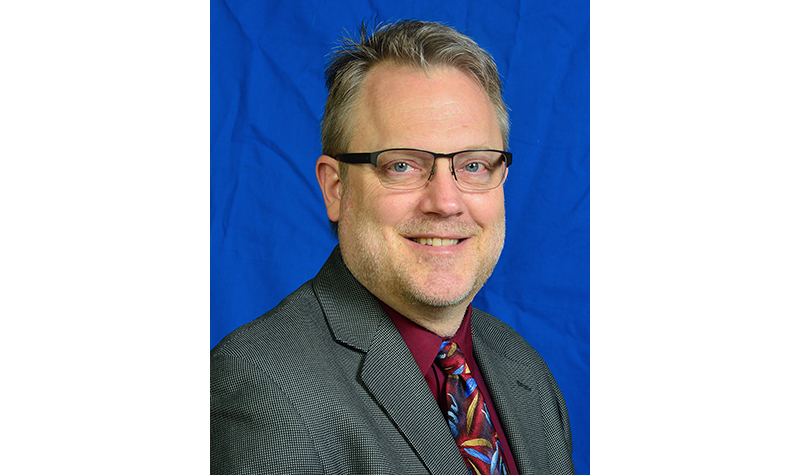From the (Associate) Dean
 Health care is constantly changing, which in turn requires health care education to continually evolve. The UND SMHS has a long history of such innovation: problem-based learning, team-based learning, online learning, interprofessional education, simulation, membership in the AMA’s Accelerating Change in Medical Education, and the establishment of an initiative in virtual health care education and delivery here in SMHS thanks to an extremely generous gift from Dr. David and Lola Munson are just a handful of examples.
Health care is constantly changing, which in turn requires health care education to continually evolve. The UND SMHS has a long history of such innovation: problem-based learning, team-based learning, online learning, interprofessional education, simulation, membership in the AMA’s Accelerating Change in Medical Education, and the establishment of an initiative in virtual health care education and delivery here in SMHS thanks to an extremely generous gift from Dr. David and Lola Munson are just a handful of examples.
We are justifiably proud of this history, but we should also be thankful, because we are facing a revolution in health care. The news is replete with stories about advances in health care technology, whether the subject is CRISPR, a gene editing tool that repairs genetic damage, or people like Kaitlyn Sadtler, a “Regenerative Tissue Engineer” who studies how helper T cells and biomaterials can regenerate tissue. It’s not difficult to imagine how these technologies are going to create significant changes in health care delivery.
And that’s the problem. It’s too easy. These changes represent evolutionary change; we are facing a revolution. Changes like CRISPR only make what we already do better or faster, but no amount of speed or efficacy in the treatment of disease is going make our populations healthier.
We spend nearly twice as much on treatment and one-third less on prevention than other countries yet we have worse outcomes. Flipping that balance will require a system that is patient-driven, where patients are engaged with their health on a daily basis. It will be disruptive health care technologies and artificial intelligence (AI) that will help drive this change.
AI can already classify some medical images as well as humans in a fraction of the time—and AI never sleeps or get paid. But it’s really expensive and not widely available. At a recent UND research fair, however, I talked to a student who had built an algorithm to classify cell phone pictures of skin lesions/growths as “benign” or “better get it looked at.” It does less than the previously described AI but is just as effective in supporting patient health care decisions and built on an engineering student’s budget. This is what makes it disruptive—it will be ubiquitous, requiring health care professionals to make use of it.
Smart watches, smart appliances, smart thermostats, home assistants, smart phones, smart clothing, and hundreds of other health care technologies today can monitor your heart rhythm, heart rate, respiration, and blood sugar. They can also monitor food and exercise and make customized recommendations; listen to your cough and tell you if you have pneumonia or a cold; provide counseling as good as a human cognitive–behavioral psychiatrist; and let your doctor know if you have fallen or are bedridden. There are more than 100,000 health care apps and Americans download 3,000 paid apps every day. While all of these arguably are inferior to the technology we have in our clinics and hospitals, they are present every minute of every day and are providing data every minute that can inform healthy choices. That’s what is needed for addressing population health.
Of course, data is no good if patients don’t know what to do with it, which is where big data and AI come in. We used to create data warehouses—structured systems that stored data in ways we could anticipate. The growth of health care data has made such warehouses obsolete. We now build data lakes, huge pools of data that can accept unlimited amounts of information. While humans cannot make sense of data lakes, AI can mine it continually to suggest new treatments and interventions. More importantly for patient directed health care, however, AI can be the hub that connects data lakes, the electronic health record, personal technology, patients, and health care providers. It can help patients interpret test results, suggest additional steps, schedule referrals, trigger alerts to providers, and even conduct some basic patient interviewing prior to a visit. In short, AI can be the health care provider in the moment.
Predicting the future of health care is hard, and our job as health care educators is even harder; we have to imagine the future first and then design education to prepare for what will be, not what is. Fortunately, we have a long history to draw from in meeting this challenge. On your mark, get set, disrupt!
Rick Van Eck, PhD
Associate Dean for Teaching and Learning
Founding Monson Endowed Chair for Medical Education, Education Resources
Professor, Department of Population Health



